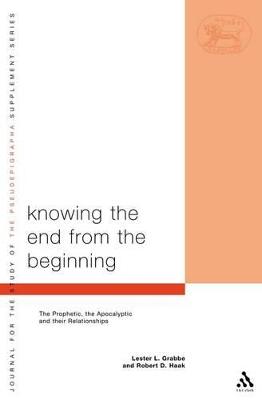Journal for the Study of the Pseudepigrapha Supplement S.
2 total works
v. 46
Much study has taken place of the prophetic and apocalyptic writings in recent decades, but the relationship between the two has been little explored. A major explicit debate on the question is very much needed and is now provided. This collection of essays addresses the subject from a variety of points of view, including studies on the issues of definitions, ancient Near Eastern GCGBPpropheciesGC[yen], social anthropology and modern apocalyptic movements. In the introduction, Lester Grabbe argues that many scholars operate with subconscious assumptions about how apocalyptic writings relate to the prophetic writings, but that many of these assumptions now need to be questioned in the light of the essays in this volume. Such a comprehensive attempt to tackle the main theoretical issues arising from the study of the prophetic and the apocalyptic has not been attempted for some time. This volume brings fresh questions and insights that both specialists and students will want to consider.
A History of the Jews and Judaism in the Second Temple Period, Volume 2
by Lester L. Grabbe
Published 1 May 2004
This is the second volume of the projected four-volume history of the Second Temple period. It is axiomatic that there are large gaps in the history of the Persian period, but the early Greek period is possibly even less known. This volume brings together all we know about the Jews during the period from Alexander's conquest to the eve of the Maccabaean revolt, including the Jews in Egypt as well as the situation in Judah. Based directly on the primary sources, which are surveyed, the study addresses questions such as administration, society, religion, economy, jurisprudence, Hellenism and Jewish identity. These are discussed in the context of the wider Hellenistic world and its history. A strength of the study is its extensive up-to-date secondary bibliography (approximately one thousand items).

